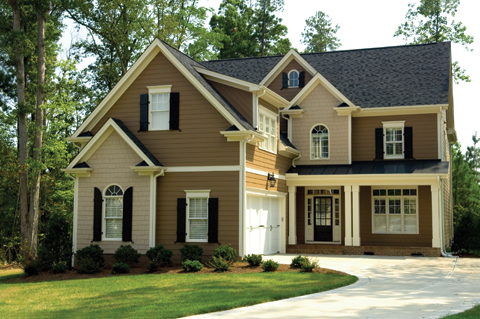If you’re like most log home enthusiasts, you’ve invested months—even years—researching, designing, and planning your log home. And unless you’re a first-time homebuyer or have exceptionally deep pockets, you will have to sell your existing house to get the down payment for your log home. You should have a plan in place for selling your current home that’s just as well thought out as your log home plan of attack.
Where Do You Begin?
First, decide whether you want to enlist the services of a real estate agent or if you want to go it alone and become what’s known as a FSBO (for sale by owner).
Sure, hiring a Realtor® is going to cost you—typically about 6 percent of the sale price of your home. But you get a lot of benefits for this fee. First and perhaps most importantly, your home will be listed in the MLS (Multiple Listing Service), which is a feature that FSBOs usually can’t take advantage of. This network lists homes available for purchase around the United States, so your marketing efforts will be nationwide, rather than in localized newspaper ads and signage, if you try to sell it yourself. Second, a seasoned professional will help take the fear out of the legalities and paperwork required for a home sale. Third, a Realtor® is trained to negotiate on your behalf. It’s in his/her best interest to get the most money for your house as possible. A good agent will ensure that your buyer isn’t trying to take advantage of you.
Next, consider the minimum amount of profit you hope to make on the sale of your home, plus how much you owe on your current mortgage, and create a target sale price for your home. This may not actually be the final price for your house, however. You then have to look at what the real estate industry calls “comps.” Comps (or comparables) are homes that have sold in your specific area within a specific timeframe (typically within a one-mile radius and within the past six months). That said, you need to make sure that the homes your house is being evaluated against truly are comparable, not just close by, meaning they should have square footage, acreage, and amenities similar to yours. Fannie Mae, the government-sponsored enterprise whose mission is to provide liquidity, stability, and affordability to the U.S. housing and mortgage markets, stresses the importance of selecting a minimum of three truly comparable properties for your appraisal report, and says that the appraiser needs to use the best available properties for comparison, even if it means stepping outside of the one-mile radius. This may be of particular importance if you live in a rural area that doesn’t have three recent home sales within a mile of your house. You can learn more about comps and other selling and servicing policies (as well as download handbooks, forms, and tips) at www.efanniemae.com.
Since the housing bubble burst four years ago, two rarely seen competitors—short sales and foreclosures—have emerged on today’s scene in a big way. If there are only one or two bank-owned homes (sometimes called “distressed sales”) in your current neighborhood, they probably won’t affect your property value. If there are a lot of them, however, it could negatively impact your profit margin. The extra inventory also means you have additional competition. The key is to emphasize your home’s features and value for its price above and beyond any other home for sale, including foreclosures and short sales.
Now you need to take stock in your home’s current condition. And depending on what you find, you have two options: Make any necessary repairs and/or upgrades yourself to achieve top dollar from your buyer, or leave them as is and let the buyer take care of them. But keep this in mind: You are required by law to disclose any functional issues in your house. And the days of buyers writing contracts without contingencies, such as an independent home inspection, are long over, so there’s no hiding them. Minor cosmetic flaws typically don’t count, unless the buyer wants to use them as negotiating points. A pristine, well-maintained home will get top dollar.
How Do You Get It Sold?
Make sure your home is in the best possible condition and listed at the most competitive price from the moment it emerges on the market. Homes that are sold within the first two to three weeks they are listed typically fetch the most money. When a property stays on the market for a while, buyers start to wonder what’s wrong with it and pass you by without so much as a casual glance. Overvaluing your property may have the opposite effect than what you intended—instead of making more money, to get it sold, you may have to accept a bid even lower than what you could have gotten if you had priced it more competitively from the get go. Plus, you’ll have the added stress of wondering if you’re ever going to sell it.
Another thing you have to do is emotionally detach yourself from your home. This can be easier said than done. After all, years of memories were built in this structure, and your perceived value of the house may be greater than that of the buyer. Remove personal mementos and photos that will prohibit buyers from being able to see themselves as the family in residence. (For more home-staging strategies, see “Set the Stage for a Sale” box.) And when offers come in, evaluate them without emotion, as well. Review them objectively, and accept the one that meets your needs.

